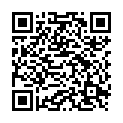|
|
|
| Module code: MAA-4.x.1 |
|
2V (2 hours per week) |
|
3 |
| Semester: 1 |
| Mandatory course: no |
Language of instruction:
German |
Assessment:
Student research project
[updated 30.07.2021]
|
MAA-4.x.1 Architecture, Master, ASPO 01.10.2012
, semester 1, optional course
|
30 class hours (= 22.5 clock hours) over a 15-week period.
The total student study time is 90 hours (equivalent to 3 ECTS credits).
There are therefore 67.5 hours available for class preparation and follow-up work and exam preparation.
|
Recommended prerequisites (modules):
None.
|
Recommended as prerequisite for:
|
Module coordinator:
Prof. Dipl.-Ing. Ludger Bergrath |
Lecturer:
Prof. Dipl.-Ing. Ludger Bergrath
[updated 05.03.2013]
|
Learning outcomes:
After successfully completing this module, students will be able to use new media technology in spatial design for university and research projects, as well as project design and architectural work.
They will have advanced their skills for development and design in a digital spatial model. They will have acquired specialized design and project presentation methods using CAD and 3-D applications, in connection with current design tasks.
[updated 30.07.2021]
|
Module content:
Architectural design and simulation as real and virtual spatial models
Complex 3D models for reviewing designs simulating light and space
3-D animation, simulation, virtual reality, sophisticated image editing, Internet publishing, walkthroughs
Interactive Internet technologies for creating your own WEB offers, VRML/OC2, spatial models online and interactive with streaming technology, on CD and video
Data transfer between the programs, improved use of the output media
[updated 30.07.2021]
|
Teaching methods/Media:
Video projector in theory parts, lecture notes also available in electronic form.
[updated 30.07.2021]
|
Recommended or required reading:
Lecture notes: Bergrath, L Multimedia und Image processing
•Series of scripts from the RRZN Hannover and documentation of the programs used
[updated 30.07.2021]
|


